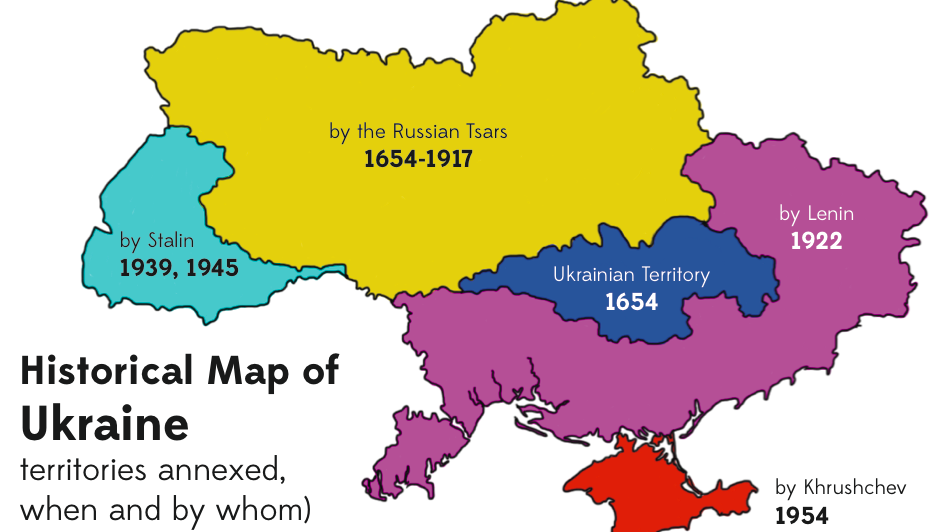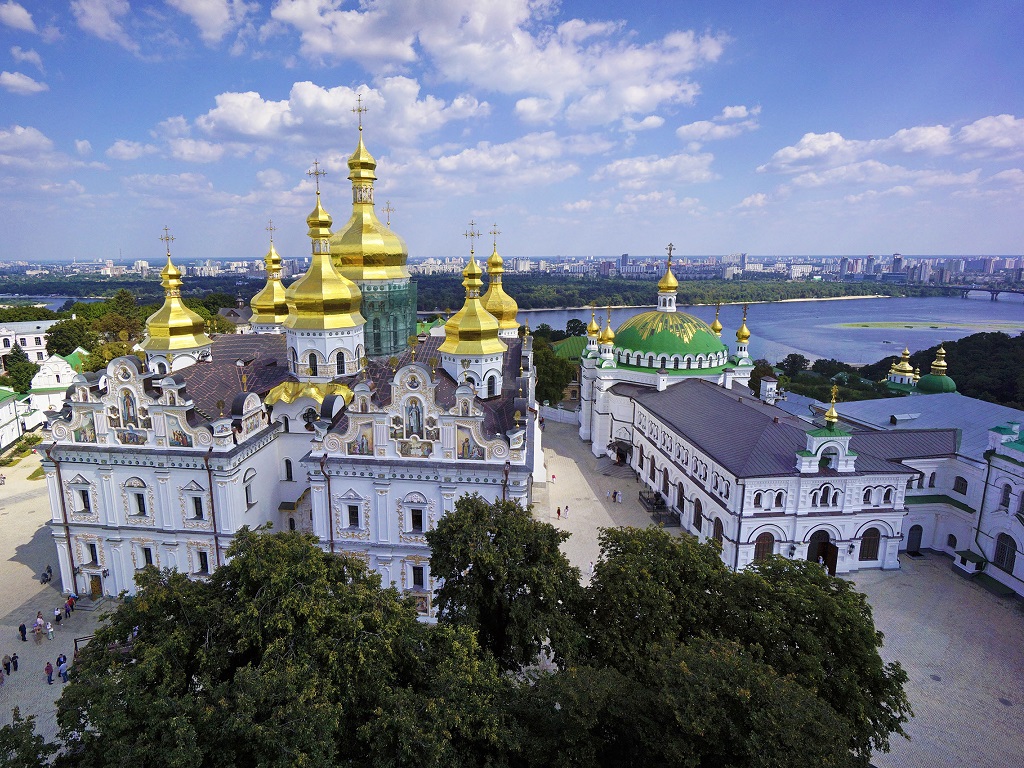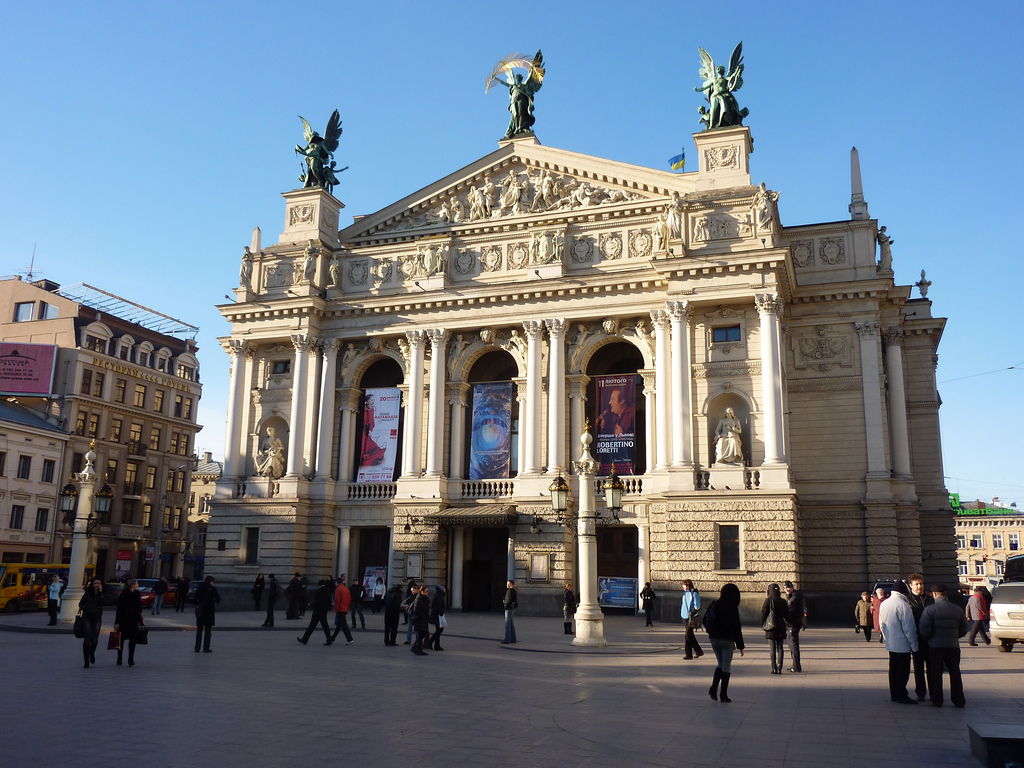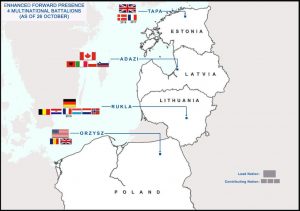
Views: 88
The eastern portion of Europe and the end of WWI
The end of WWI resulted in significant changes concerning the political boundaries of Central, East, and South-East Europe. For the reason of the extent of these changes and the newly born regional wars over the land distribution that erupted in several mini-regions in the eastern portion of Europe, it was to take around five to six years before new borders between the states were finally established and stabilized at least up to 1938.
The political transformation of the eastern portion of Europe after 1918 was a direct result of the collapsing both the German Second Empire and the Austro-Hungarian Empire during the last months of 1918, as well as due to unsettled western borders of the ex-Russian Empire (collapsed in 1917) which still was involved into the revolution and civil war. Most of the boundary changes in this half of Europe after WWI were direct result of decisions reached by the Entente powers (Allied and Associated Powers during WWI) at the Paris Peace Conference that began in early 1919 resulting in five peace treaties, named after the castles outside Paris where they have been finally signed. Each of these peace treaties was dealing in part, but in some cases entirely, with states in Central Europe that was the case, for instance, with Poland which was in the post-WWI military-political conflict with the West Ukrainian nationalists over the land of East Galicia.
The state borders of post-WWI Poland were decided by the Paris Peace Conference by three means: 1) Through decisions of the Council of Ambassadors; 2) Plebiscites held under Entente direction; and 3) By the result of the war with West Ukraine and Bolshevik Russia. Concerning Poland, the final settlement of its eastern borders became the most complex. In fact, the first boundary problem became Galicia or more precisely East Galicia where Poles went to open war with Ukrainians. On November 1st, 1918, when the rule of Austria-Hungary finally collapsed in the region, local Ukrainian nationalistic leaders proclaimed the independence of the West Ukrainian National (People’s) Republic. This new state claimed the whole of East Galicia (eastward from the San River with Lwów) to be Ukrainian followed by North Bukowina and Carpathian Rus’. However, these territorial claims became immediately challenged by local Poles who fought all over Galicia to be united with the post-WWI Poland. Consequently, the result was a Polish-Ukrainian War that lasted from November 1918 until the summer of 1919, when the Galician-West Ukrainian military detachments were expelled from East Galicia which finally became a part of the interwar Poland.
East Galicia and Central Powers
The land of East Galicia was before WWI included in Austria-Hungary (Austrian part) having mixed ethnic composition (as a majority of the provinces of the Austrian-Hungarian Monarchy at the time). East Galician population before WWI was almost 5 million: a majority of it was “Ukrainians” (3,1 million), Poles (1,1 million), and Jews (620,000) followed by several other small ethnolinguistic communities. The Ukrainians (whatever this ethnic term meant at that time) had population domination in the countryside (villages), but the towns and cities were inhabited by the Polish and Jewish majorities.
It was in general tolerant policy by Vienna toward national minorities which resulted in Ukrainian, Polish, and Jewish political and national organizations existing side by side in peace.
Ukrainian national organizations have been struggling to defend their own ethnic-regional autonomy and to strengthen Ukrainian national identity among the local Slavic people. However, the reality on the ground was not so favorable for Ukrainian national propaganda for the very reason that regardless that the intelligentsia which was accepting Ukrainian ethnolinguistic identity had been quickly progressing but on other hand, an overwhelming number of the peasantry (majority of the population of East Galicia) was not affected with Ukrainian national identity’s propaganda. Another fact was that both ethnic Poles and Jews had clear domination over the areas of education, culture, regional economy, and civil administration. The Poles regarded the city of Lwów/Lvov/Lemberg/L’viv (which was the crucially important settlement in East Galicia) as one of the most important cities of Polish culture and nation following Cracow, Warsaw, and Wilno/Vilnius.
During WWI (1914−1918), the Central Powers but especially Germany stubbornly supported Ukrainian national identity, nationalism, and national goals – all of them directed against Russia and Russian national interests. On February 9th, 1918 in Brest-Litovsk it was signed the peace treaty between one hand the Central Powers (Germany, Austria-Hungary, Bulgaria, and the Ottoman Empire) and the Ukrainian People’s Republic (the UPR) – Brotfrieden in German (“Bread Peace”). The peace treaty ended the war in East Galicia and recognized the sovereignty of the UPR. One of the most important points of this peace treaty was that the victorious Central Powers promised Ukraine some territories which included the Kholm region (populated by the Polish-speaking majority) as well as. It was also a secret initiative to transform both provinces of Bukovina and East Galicia into a crownland of Austria-Hungary (Austrian part) but the plan became soon extremely problematic issue for the reason that the Poles opposed it insisting on the indivisibility of the whole of Galicia in which they would have a dominance. In other words, for the Poles, the pro-Ukrainian policy of the Central Powers during WWI and especially in 1918 was not only anti-Russian but even more anti-Polish. Therefore, due to the policy of Berlin regarding the Ukrainian Question in 1918 the interethnic conflict between Poles and Ukrainians became, in fact, unavoidable.
The conflict
In the autumn of 1918 during the collapse of the Danube Monarchy (Austria-Hungary), national workers of several ethnic groups within the monarchy had been preparing plans for the creation or re-establishment of their own (united) national states after the war. That was the case as well as with the Polish politicians in Galicia who wanted to include the whole region of Galicia (Western and Eastern) into the united national state of the Polish people. However, the Ukrainian political workers from West Galicia opposed such a Polish idea and on the night of November 1st, 1918 organized a coup. As a result, helped by Ukrainian national units, they succeeded in occupying Lvov and other cities in East Galicia. At the same time, they proclaimed the West Ukrainian People’s Republic as an independent Ukrainian state. The Poles of Lvov (being a majority of the city) were taken by surprise but organized a military defense (including schoolchildren) and soon expelled Ukrainian forces from the biggest part of the city. Nevertheless, in other cities of East Galicia, the Ukrainians had the greatest success, except in the city of Przemyśl/Peremyshl. Polish troops made advances in other cities in the western portions of East Galicia but on the other hand, Poland failed in several attempts to resolve this Polish-Ukrainian conflict by arbitration. In other words, before Poland proclaimed its own independence on November 11th, 1918, the war between Polish and Ukrainian forces already was going on over East Galicia and its most important city – Lvov.
The Polish armed forces expelled the Ukrainian military from Lvov on November 22nd, 1918. However, Lvov was under siege including constant firing by the Ukrainian military until April 1919 (five months). Nonetheless, immediately after the Ukrainian forces were drone away from Lvov, it happened the pogroms against the Jews in which up to 80 people died. The issue was that the local Pols accused the Jews of supporting the Ukrainian side regarding the destiny of Lvov. Especially, the Jewish paramilitary units being armed by the Ukrainian side have been accused by the Poles of anti-Polish policy in the city.
During the war between the Polish and Ukrainian forces over East Galicia in 1918−1919, the Polish side was gradually winning over the enemy. For the Ukrainian side in the conflict, the crucial problem was that the West Ukrainian political-military leaders did not succeed in mobilizing the biggest part of the Ukrainian peasantry for their course as the peasants have been much more involved in their economic than the political interests of existence. Another problem/question is how much they have felt themselves as “Ukrainians” at all in order to fight against the Poles. In such a political situation, in order to attract the peasants for the Ukrainian course, the Ukrainian nationalists tried to make use of some social-economic slogans and, therefore, promised the peasantry an agricultural reform after the war –distribution of land (the same have been propagating the Russian Bolsheviks at the same time). Nevertheless, the Ukrainian nationalists used all means of force for the reason to mobilize the peasants of West Ukraine for the Ukrainian military to fight Poles in East Galicia.
The mediation by Entente
After the Great War, in 1919 the Entente powers attempted to mediate in this Polish-Ukrainian war with the final purpose to bring the war to an end as quickly as possible taking into account the post-war peace conference in Paris and around castles. In fact, what they preferred was a priority of the fight against Russian Bolshevism and, therefore, the Polish-Ukrainian War was simply weakening the European forces against the potentially aggressive policy of the Bolsheviks who at that time supported all kinds of the left revolutions in Central Europe. In other words, this war occurring on the borders with the Bolshevik Russia was preventing the creation of a united anti-Bolshevik Polish-Ukrainian front which could block eventual aggression of Europe by Lenin’s Red Army. The first practical move by the Entente forces concerning the making of peace between Ukrainian and Polish military forces occurred in February 1919 when a special French-led military commission negotiated both a truce and a demarcation line between Poland and Ukraine. According to this proposal, the city of Lvov and the oil region to the south around Boryslav had to go to Poland. In other words, some 2/3 of East Galicia would be included in West Ukraine.
The Entente’s commission also decided that the West Ukrainian People’s Republic was a failed state – not a viable one. The real reason for such a conclusion was the fact that the East Galician movement of independence was based only on an extremely tiny stratum of intelligentsia without massive support by the people especially in the countryside. The Ukrainian nationalists and politicians in order to attract the local peasants of East Galizia promised them alongside the agrarian reform as well as houses and castles of Lvov. However, it happened that the West Ukrainian national fighters lost control over the peasant movement they had themselves inspired.
As a matter of fact, the Polish leaders involved in the conflict accepted (half-heartedly) the set of peace-meal conditions required by the Entente commission. However, the same conditions Ukrainian leaders rejected and, automatically, ended the previously agreed Polish-Ukrainian truce. As a consequence, the Ukrainian armed forces on March 10th, 1919 started a new offensive to occupy the city of Lvov which soon collapsed just after the following ten days. In essence, that became a real turning point in the 1918−1919 Polish-Ukrainian War over East Galicia and the making of a final border between newly re-established Poland and newly to-be-formed Ukraine. Nevertheless, from mid-March 1919, that was Poles who took the military and political initiatives over the Ukrainians. Basically, it became obvious that the Ukrainian side would lose the war against Poland concerning East Galicia and the city of Lvov. During the night between April 14/15th, 1919, the Poles launched a fruitful attack resulting in Lvov not anymore at the distance of firing the city by Ukrainian artillery fire. The Polish offensive was so successful that in May 1919 Poles took several other East Galician cities (Stanislawów in Polish or Ivano-Frankivsk in Ukrainian) – that was at that time the headquarters of the Ukrainian political and military authorities.
At the very beginning of June 1919, West Ukrainian military detachments were in control of only several areas of East Ukraine. What happened, was pressure by the Entente commission on the Polish side to stop further offensive, and the bilateral truce negotiations between Poland and Ukraine were renewed. Nevertheless, West Ukrainian leaders did not respect the truce agreement and suddenly started an offensive on June 7th, 1919 with the result of recapturing some areas of East Galicia from the Polish side. Therefore, Poles blamed Ukrainians for the prolongation of the military conflict in and over East Galicia to such an extent that Entente states were compelled to send a commission to the city of Lvov for the sake to do investigation regarding serious complaints about crimes against the civil population in the city committed, in fact, by both sides. The commission finally did not find relevant evidence of Polish war crimes but, oppositely, a lot of cases of war crimes were done by the Ukrainian side. What is of probably crucial importance to emphasize here is the fact that the commission found a very enthusiastic reception of the Polish troops by the city dwellers as liberators against the terror of the “Ukrainian bands”.
The commission composed of the representatives of the Entente powers in order to finally solve the problem of East Galicia proposed that the whole territory of this region be occupied by the Polish troops and, in fact, consequently, included in the post-WWI Polish national state. For that reason, the Council of Foreign Ministers in Paris on June 25th, 1919 gave open permission to the Polish government in Warsaw to launch a new military offensive in East Galicia for the final purpose of expelling all West Ukrainian military detachments from the region and occupy the same completely. It was agreed that the Haller Army (armed in France) to be sent to Poland and deployed in the struggle against the communist units. For Eastern Galicia, autonomy had to be given within Poland, and the final decision on the status of East Galicia would be decided by referendum (but organized by the Polish authorities).
Finally, the Polish army led by Piłsudski himself, on July 2nd, 1919 started its decisive military attack against West Ukrainian military troops and succeeded in expelling them from the complete territory of East Galicia. Up to July 18th, 1919, the forces of West Ukraine composed of some 20,000 soldiers crossed the Zbruch River and entered the territory of the Ukrainian People’s Republic. Therefore, the destiny of East Galicia was decided in favor of Poland up to WWII.
Final remarks
The war between Poland and West Ukraine was going on from November 1918 to July 1919. According to different scholars, the war took around 25.000 lives of the soldiers from both sides: around 10.000 Polish and 15.000 Ukrainian. However, due to the lack of sources, we can very hardly estimate the number of losses among the civilian population. Nevertheless, it was less than the overall number of soldiers lost combined from both sides. Another feature of this war was the fact that atrocities committed against both the civilian population and prisoners of war have been not on a large scale compared with some other cases during WWI, for instance, Serbia which lost around 25% of its population.
This war between the Polish and Ukrainian sides, nevertheless, poisoned Polish-Ukrainian relations for decades and became clear during WWII when Ukrainians committed a large-scale genocide on the Poles (and Jews) in Galicia.
The Polish-Ukrainian dispute was over the land:
- For the Polish side, the problems concerning the belongings of East Galicia did not end with the military defeat of West Ukrainian armed forces in July 1919. However, the problem continues to be as such for the next two decades playing the focal influence in both inner and foreign affairs of Warsaw.
- For the Ukrainian side, the problem was solved by J. V. Stalin at the end of WWII as according to his decision, East Galicia became annexed by Soviet Ukraine. The local Poles have been forced to live outside their motherland – Poland up to the present day while Ukrainians succeeded in creating within the USSR a Greater Ukraine by the annexation of the land from all neighbors.
- The Entente powers, nevertheless, being concerned with the direct threat of the export of the Bolshevik revolution from Russia to Europe, granted East Galicia (temporarily) to Poland having in mind to create at such a way a stronger defense corridor against Bolshevik Russia. However, the Treaty of Saint Germain signed in September 1919 gave only West Galicia (westward from the San River to Poland), leaving, therefore, the final resolution of the belonging of East Galicia as a problematic issue to be solved in the future.
- In December 1919, the British statesman Lord Curzon proposed two possible boundary lines throughout Galicia: 1) One of which would serve as the southern extension of what he proposed should be the eastern borders of Poland. That was officially accepted to be named as Curzon Line. The 2) variant, which was further east and included Lwów, would serve as Poland’s border. In reality, no one of these proposed solutions was accepted by Warsaw, whose annexation of all of East Galicia was, in March 1923, recognized by the Entente Council of Ambassadors.
Ex-University Professor
Research Fellow at Centre for Geostrategic Studies
Belgrade, Serbia
www.geostrategy.rs
sotirovic1967@gmail.com
© Vladislav B. Sotirovic 2024
Personal disclaimer: The author writes for this publication in a private capacity which is unrepresentative of anyone or any organization except for his own personal views. Nothing written by the author should ever be conflated with the editorial views or official positions of any other media outlet or institution.
Origins of images: Facebook, Twitter (X), Wikimedia, Wikipedia, Flickr, Google, Imageinjection, Public Domain & Pinterest.
Read our Disclaimer/Legal Statement!
Donate to Support Us
We would like to ask you to consider a small donation to help our team keep working. We accept no advertising and rely only on you, our readers, to keep us digging the truth on history, global politics, and international relations.
FOLLOW US ON OUR SOCIAL PLATFORMS










